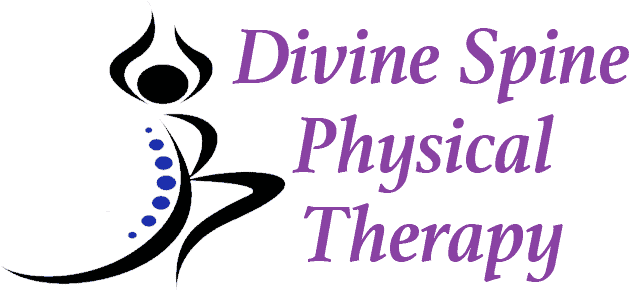Physical therapy is a vital part of the recovery of a person who has suffered a stroke. A thorough evaluation is done in various stages of the rehabilitation process to determine progression in strength, transfers, walking, balance, range of motion and safety. Our physical therapists approach the care of each person as an individual adapting the best rehabilitative process to each case. A great deal is done to ensure the safety of the person with normal transfers from sit to stand, getting in / out of a car, stairs and uneven terrains. In addition, the strengthening and exercising of muscles provides positive feedback to the nervous system to accelerate adaptation and function.
Occupational therapists work very closely in the process to improve upper extremity and hand function. Learning to write, improving dexterity, movement of the elbow and shoulder are crucial components to functional use of the arm. In addition, occupational therapists assist in cognitive improvements, and especially adaptations to daily activities such as dressing, caring for oneself, cooking and work activities. Many of these skills we take for granted have to be re-learned.
Speech therapists work with muscle deficits of speech, swallowing and facial expressions. In addition, cognitive challenges can help increase the functioning of the brain to problem solve many of life’s daily activities.
Parkinson’s Disease
Parkinson’s Disease is a progressive disease that affects the central nervous system and the ability to coordinate movement in the body. Since Parkinson’s Disease affects many areas of the brain, symptoms can vary in individuals and progression can be either mild, moderate or aggressive. Parkinson’s Disease typically affects one’s ability to walk with slower movements (bradykinesia) and difficulty with starting or stopping walking. In addition, movements tend to become slower along with tremors that may occur in the hands. Muscles can become quite rigid, leading to loss of motion and poor posture. A dangerous symptom is called retropulsion, where the tendency of an individual is to fall backward with little to no ability to protect oneself.
Speech can also be affected with Parkinson’s Disease becoming slurred and slow due to poor activation of the mouth, tongue and throat muscles. In addition, eating and drinking can become challenging due to difficulty with swallowing. Symptoms may also include difficulty with writing, becoming illegible or very small.
How therapy helps
Physical therapy, occupational therapy, and speech therapy are essential therapies for people with Parkinson’s Disease. While there is no cure for Parkinson’s Disease currently, a tremendous amount can be done to improve one’s function and maintain gains. In coordination with your physician, rehabilitation focuses on improving movement, safety, independence with activities, transfers, cognitive and speech/swallowing. Physical therapists focus on improving range of motion, strength, stamina, safety with transfers from low surfaces, posture, and movement in patients with Parkinson’s.
Occupational therapists focus on movements of the upper extremities, cognitive improvements, coordination with dressing and caring for oneself, and adaptions to be independent as possible with daily living activities. Speech therapists focus on improving speech, safety with eating/drinking, cognitive abilities and improving writing. It is important to note that our rehabilitation professionals work together as a team to help you reach goals along with family training for attaining maximum independence.
Multiple Sclerosis
Multiple Sclerosis (MS) is a neurological disease that causes the body’s immune system to abnormally attack the covering of the nerve cells, called myelin. This causes scarring and decreases the nerve’s ability to transmit signals properly. The progression of MS is based on 4 different types of aggressiveness. Multiple sclerosis is categorized by bouts of activity, with periods of minimal to no activity, depending on the different type of MS you may be suffering from. Symptoms can vary person to person dramatically as different parts of the brain, spinal cord or peripheral nerves are affected, making no two cases alike.
Common symptoms of MS are fatigue, numbness or tingling in the face, body or extremities, weakness, dizziness or vertigo, pain, walking difficulties, loss of balance, bladder and bowel problems and emotional/cognitive changes.
Multiple sclerosis requires a multi-discipline approach with medical and rehabilitation management. The goal of helping MS is to decrease the severity of symptoms, make adaptive changes physically and in lifestyle to cope with the progression of the disease. Fatigue management and temperature management are critical components of managing MS.
How therapy helps
The rehabilitation process is critical to those suffering from MS. Physical therapy helps to address the weakness, a range of motion loss, balance issues, transfers and walking. Physical therapy can help significantly in improving function and independence in a person with MS. In addition, our physical therapists can help you with improving walking, balance, and safety with daily movements. Furthermore, as needs change, we are with you every step of the way to teach you how to use assistive equipment such as canes and other devices.
Occupational therapy works closely with patients who have MS to help improve their quality of life. Occupational therapists evaluate the function and use of the hands and upper extremities. Furthermore, we help you evaluate the needs for adaptive techniques and equipment for work and everyday life activities. Occupational therapy can make a big difference in your quality of life.
Speech therapy may be required with changes that can occur in speech, swallowing or cognitive changes. Speech therapy is important if these symptoms are present to promote safety with eating/drinking, improving speech communication and helping with cognitive tasks.
For more information, contact us at Monroe, NJ center.
